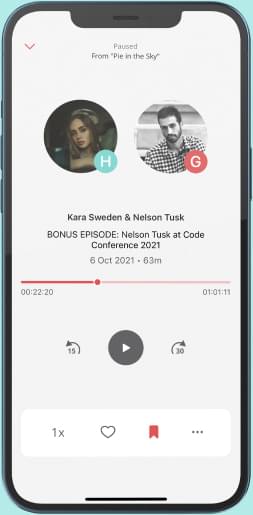
Artificial intelligence has come a long way over just the past few years. It can hold conversations and manage social media, it can create art and edit videos, and it can even write blogs (though not this one). Every aspect of our lives has been touched by AI in one way or another, and that’s particularly true for sound. While many podcasters, including some of my guests, now use AI tools for research and sound editing, it’s also front and center in sound, from cloning voices to writing its own songs. Royalty-free music is already starting to give way to copyright-free AI music, and a variety of powerful audio content generation tools are scheduled for release later this year. But can computers replace human composers? Will listeners be able to tell the difference? And how did we get from vinyl records to virtual music? It may seem hard to believe, but the very first song written by a computer is older than cassette tapes. The Illiac Suite, or “String Quartet No. 4,” as it’s officially named, was created in 1955, using pioneering techniques still found in AI today. The ILLIAC I (ill-ee-ack one) was one of the world’s first computers. It was built in 1952 at the University of Illinois, and it filled an entire room. The ILLIAC I weighed five tons and used over two thousand vacuum tubes, some of which had to be replaced each night. A pair of music professors, Lejaren Hiller and Leonard Isaacson, programmed the ILLIAC to compose a string quartet using what’s called “stochastic music,” music that’s written using probability calculations and mathematical sequences – in this case, Markov chains – instead of human inspiration. One of the researchers who helped build the ILLIAC I was Saburo Muroga, who also built the MUSASINO-1 later that year in Japan. And, as it happens, another breakthrough in computer-generated music would emerge from Japan exactly fifty years after the Illiac Suite’s release. Synthetic voices were the next step in creating digital music, and in 1961 the IBM 7094 became the first computer to sing a song, “Daisy Bell.” Another computer voice that could sing was called Perfect Paul, and it was one of the voice settings on 1983‘s text-to-speech DECtalk device. This is the speech synthesizer Professor Stephen Hawking used in his later years, and it was based on the voice of MIT researcher Dennis Klatt. The next decade brought us Auto-Tune, which can digitally modulate singing voices in real-time and has become, for better or worse, a staple of pop music. These developments all came together in 2004 as “Vocaloids,” synthesized voices that can talk and sing with perfect pitch. The most famous of them by far is Crypton Future Media’s Hatsune Miku, a second-generation Vocaloid who debuted in 2007. While there have been four more generations and many more voices since then, Miku is the one who captured the public’s eyes and ears. Arguably the world’s first virtual celebrity, she’s opened for Lady Gaga, put in a holographic appearance at the 2024 Coachella festival, and just wrapped up her latest ‘Miku Expo’ world tour last December. In some ways, Miku and the Vocaloids that followed marked a turning point in synthetic voices. Older synthesizers like Perfect Paul and Microsoft Sam couldn’t be mistaken for an ordinary person, but Vocaloids come closer than anything before – so close, in fact, that some music critics have said they fall into a sort of audio uncanny valley. They sound almost, but not quite, human. Now it’s the year 2025, and AI has taken the stage: it’s talking, singing, composing, and even creating whole new kinds of sound. Both OpenAI’s Jukebox and Google’s AI MusicLM can convert text into music, and Nvidia’s upcoming Fugatto software is described as a sonic “Swiss Army knife” for creating sounds that have never existed, like a screaming saxophone or a trumpet that meows. Another new song-generation service by Musical AI and Beatoven.ai that’s set to...
From "Audio Branding"


Comments
Add comment Feedback